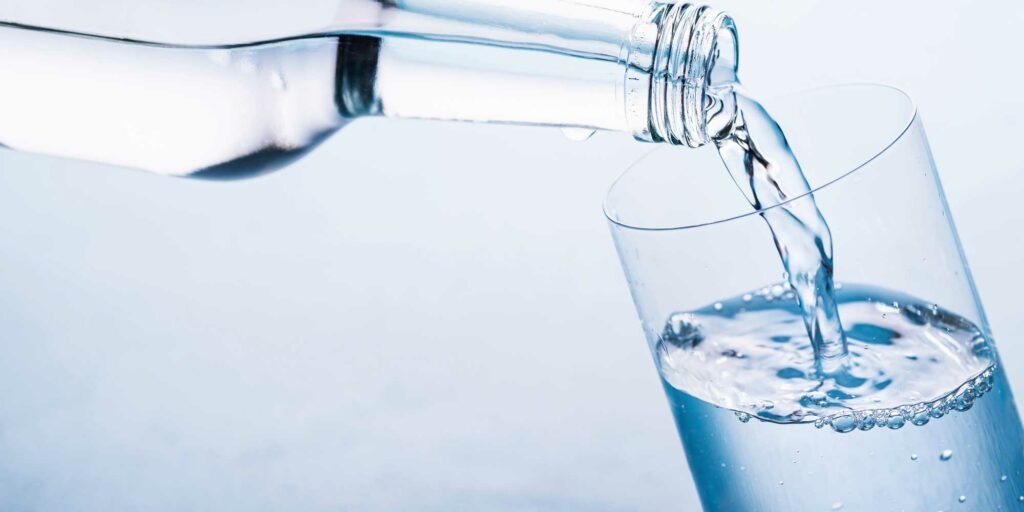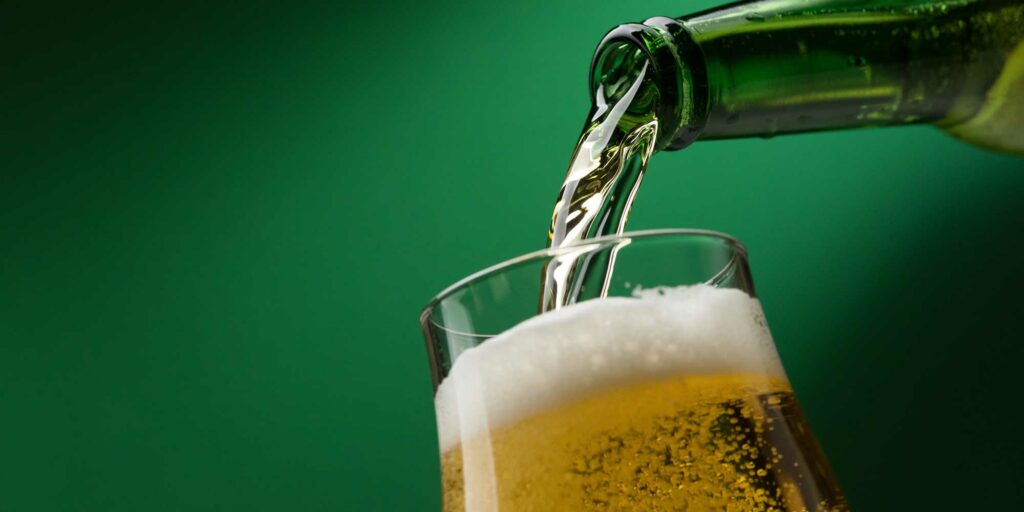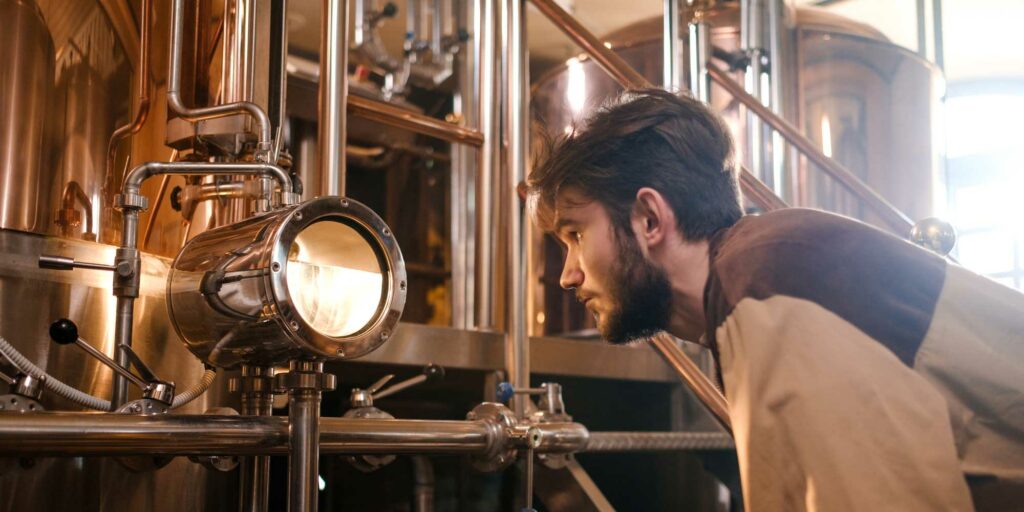
How do you treat brewing water & A Brief History of Water Treatment in Brewing
Have you ever stopped to think about how water influences the taste of your favourite beers?
Along with malted grains, hops and yeast, water is one of the four key components used in brewing. It makes up by far the largest volume per ingredient used, both in production terms, and in the finished beer you drink. In fact, for every pint of beer produced, around five times as many are used to make it.
This is largely because brewing involves a serious amount of cleaning in order to maintain the rigorous hygiene standards modern beer production requires. But it’s also worth considering how much water goes into what you actually end up drinking. Even if subtle, the sheer volume of water present is going to have an effect on the flavour of the finished beer. In fact, the very makeup of a water profile will directly affect how the other ingredients used during the brewing process will end up tasting. As such, many of today’s brewers are also adept chemists, using treatments, additives and modern equipment to dial in their water profile and use this to their advantage. If brewers were artists, then water is their canvas, stretched out over its frame before colour, form, and pattern is applied.
Ironically however, water and its chemistry is perhaps the driest subject when it comes to brewing. How it influences flavour, and reacts with beer’s other ingredients is immensely complex, and takes a scholarly mind to properly comprehend. If you make beer yourself, or are interested in the method and science of brewing it’s well worth slogging your way through Water: A Comprehensive Guide to Brewers by John Palmer and Colin Kaminski. The book is full of highly technical information, and reading it is just about the best way to understand how water—or liquor, as it is referred to when it is used as a brewing ingredient—influences a finished beer.
How do you treat brewing water ? The other way to understand how water influences beer, however, is to drink it. And travel to places where the water used in a particular recipe is as influential as malted barley, or the finest, freshest hops.
The moment where I truly understood the influence of water in beer was deep in the cellars at Pivovar Plzeňský Prazdroj, in the Czech city of Pilsen, the home of Pilsner Urquell. Often thought of as the first Golden Lager by beer historians, it has been brewed here since it was developed by brewmaster Josef Groll in 1842.

During my tour I was constantly reminded by my guide that Pilsen was home to “the softest water in the world” which is why the region was perfect for brewing pale, golden lagers. Whether or not the claim is 100% true, what is correct is the water here is fantastic for brewing, especially when it comes to beers that are lighter in colour. The softness allows more subtle flavours—in this case the biscuit character of pale Moravian barley, and the snap and spice of Saaz hops—to shine. Here in these cellars, where the beer is served in its unpasteurised, unfiltered form, you can taste its influence in every sip.
From this point on, how water affects a beer’s flavour became increasingly evident to me as I drank my way around the world. The soft water of the North West of England also makes it perfect for pale beers—in this case bright and beautiful hoppy bitters, served on cask. Move a little more northeasterly to Yorkshire, however, and you’ll get an almost mineral, flinty character, which is often why some local beers tend to be on the maltier side, to balance this out, and prevent a beer from being too astringent.
There are two regions in the UK that are perhaps the most well-documented in terms of how influential their water has been in the history of brewing: London, and Burton-upon-Trent. When we look at how do you treat brewing water, the British capital is known for having very hard water, which, depending on from where it’s sourced, will be drawn through limestone, or chalk, making it rich in calcium and magnesium carbonates, bicarbonates and sulphates. This, along with it being more alkaline than other water sources, makes it ideal for the production of darker beers like porter and stout. London water balances the astringent character of darker malts, drying it out, creating a more palatable beer.
Burton-upon-Trent, nestled in the Midland county of Staffordshire, is often thought of as the traditional home of British brewing. It is referred to by historians as the birthplace of India Pale Ale, which was brewed strong and shipped off to India during its occupation by British colonialists. The high concentration of sulphates in its water made it excellent for the absorption of hop alpha acids, meaning that brewers could extract more bitterness—and in theory more preservative qualities—from the hops. But this also meant they could extract more flavour and aroma.
In the early-to-mid 19th century, breweries attempting to replicate this would open breweries where the water was similar in quality—or they would simply move their business to Burton. Others, however, would attempt to “Burtonise” their water by adding a mineral called gypsum (better known as calcium sulphate), helping to adjust wort pH, and provide sufficient calcium ions essential for enzymes to function, proteins to coagulate during boiling, and ensure healthy yeast function during fermentation.

It is from this point modern water treatment techniques in brewing emerged. By the late 19th century chemists had successfully analysed and documented the process of Burtonisation. As science progressed in the 20th century so did the range of water treatments improve, from brewing salts, acids and enzymes used to optimise water sources for particular recipes. Today’s brewers—from homebrewers to professionals— are lucky to have suppliers such as Murphy & Son, which produce a fantastic range of products, allowing brewers to tailor water to suit their needs.
How do you treat brewing water? Water treatment has continued to advance in the 21st century too, with some breweries investing in reverse osmosis treatment facilities. These clever devices will strip water of its unique chemistry, giving the brewer the aforementioned “blank canvas” with which to use additives and process aids to replicate the water from any region, which means you can drink Czech Pilsner made in California, London Porter made in New Zealand, and so on…
The influence of water in brewing—and indeed the advantages modern water treatment lends to brewing—cannot be understated. Next time you enjoy a beer, spare a thought for what is perhaps beer’s most under-considered ingredient, and raise a glass to the chemists who gave today’s brewers a huge technical arsenal in terms of dialling in precise flavours for you to enjoy, time and time again.
Checkout the series of Water Treatment Videos we have over on the Geterbrewed Youtube Channel
If you need a water analysis carried out we recommend Murphy and Son We stock all of their products here at Geterbrewed for allowing you to adjust your water profile